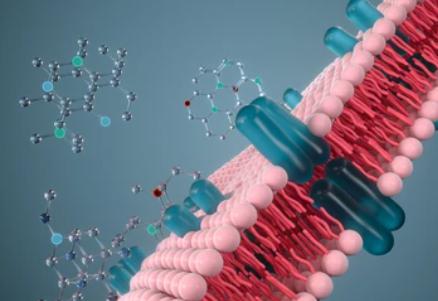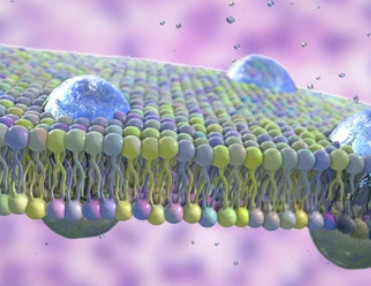Novel Applications of Membrane Proteomics in Drug Discovery
Online InquiryIn the field of modern drug discovery, the identification and characterization of potential drug targets is a fundamental step in the development of effective therapeutic interventions. Over the past decades, membrane proteins have emerged as key players in this field, providing new and previously unexplored avenues for drug discovery. Membrane proteins are key proteins in the cell membrane that play a very important role in regulating the transfer of substances through the cell membrane, and the study of the structure and function of membrane proteins has very important applications for drug discovery.

Importance of Membrane Proteins in Drug Discovery
Membrane proteins, despite comprising only a fraction of the proteome, wield an outsized influence in drug discovery due to their strategic positioning and multifunctional roles. Their importance is rooted in their ability to serve as gatekeepers, orchestrating the passage of vital molecules into and out of cells, as well as their involvement in signal transduction cascades that govern cellular responses. These pivotal functions render them not only intriguing subjects of study but also prime candidates for therapeutic intervention.
Gateway to Cellular Functionality
Membrane proteins stand as sentinels at the crossroads of cellular interactions. They mediate the transport of ions, nutrients, and signaling molecules, regulating the cellular microenvironment and maintaining homeostasis. For instance, transporters like the glucose transporter GLUT4 play a central role in glucose uptake, making them appealing targets for drugs aimed at managing diabetes. By targeting these proteins, researchers can manipulate cellular behavior and modulate disease states.
Cellular Communication and Signal Transduction
The pivotal role of membrane proteins in signal transduction pathways cannot be overstated. Receptors embedded in the cell membrane, such as GPCRs, intercept extracellular signals and initiate intracellular responses. The sheer diversity of GPCRs and their involvement in processes ranging from neurotransmission to immune response makes them a treasure trove for drug development.
Targeting Disease Pathways
The link between membrane proteins and disease pathways has opened up avenues for precision medicine. By deciphering the role of these proteins in specific diseases, has identified novel targets for drug intervention. An exemplary case is the discovery of HER2/neu receptor overexpression in certain breast cancers, leading to the development of the targeted therapy Herceptin. This personalized approach, hinging on membrane protein expression patterns, has transformed treatment outcomes and patient well-being.
Membrane Proteins as Drug Targets and Drug Transport Channels
In the realm of drug discovery, membrane proteins have emerged as dynamic assets, not only as potential drug targets but also as critical players in drug transport. Their strategic location within cellular membranes allows them to mediate vital processes and serve as conduits for therapeutic interventions.
Membrane Proteins as Drug Targets
Targeted therapies have gained prominence in modern medicine due to their precision and reduced off-target effects. Membrane proteins, with their unique spatial positioning and involvement in disease pathways, have risen to the forefront as attractive candidates for drug targeting.
- GPCRs as Exemplars. G-protein coupled receptors (GPCRs) epitomize the potential of membrane proteins as drug targets. These receptors play a central role in cellular signaling and are implicated in numerous diseases. In-depth studies on GPCRs have led to the discovery of ligands that modulate their activity. By targeting specific GPCRs, such as the beta-adrenergic receptor in cardiovascular diseases, can development of drugs that precisely regulate physiological responses.
- Ion Channels in Disease. Ion channels, a subset of membrane proteins responsible for the passage of ions across cell membranes, are essential for various physiological processes. However, dysregulation of ion channels contributes to diseases like cardiac arrhythmias and epilepsy. Identified ion channels as potential therapeutic targets, leading to the development of drugs that restore ion channel function and alleviate disease symptoms.
 Understanding Membrane Protein Drug Targets in Computational Perspective. (Gong J, et al,. 2019)
Understanding Membrane Protein Drug Targets in Computational Perspective. (Gong J, et al,. 2019)
Membrane Proteins as Drug Transport Channels
Membrane proteins are also integral to the movement of drugs across cellular membranes, influencing their absorption, distribution, and elimination. These proteins, acting as transport channels, can either facilitate or impede the entry of therapeutic agents into cells.
- Efflux Transporters and Multidrug Resistance. Efflux transporters, such as P-glycoprotein, play a crucial role in multidrug resistance exhibited by cancer cells. These proteins pump out drugs, rendering treatments ineffective. To conduct extensive research on efflux transporters, uncovering their structural details and functional mechanisms will evade efflux mechanisms, enhancing drug delivery to target cells.
- Overcoming Blood-Brain Barrier. The blood-brain barrier presents a formidable obstacle to drug delivery to the central nervous system. Membrane transport proteins at this barrier dictate the passage of molecules into the brain. By designing drugs that exploit these transporters, can facilitate the delivery of therapeutic agents to the brain, opening up new avenues for treating neurological disorders.
Accelerating Drug Discovery through Membrane Proteomics
In the pursuit of expediting drug discovery, membrane proteomics has emerged as a game-changing tool. Traditional methods for studying membrane proteins often face challenges due to their hydrophobic nature, making extraction and analysis complex. However, Creative Proteomics has revolutionized this landscape by developing innovative techniques that enable comprehensive analysis of membrane proteomes.
Through mass spectrometry-based approaches, Creative Proteomics has enabled the identification and quantification of membrane proteins with unprecedented accuracy. This not only facilitates the cataloging of membrane proteins but also expedites target identification. By employing quantitative proteomics, the company has enabled the comparison of membrane protein expression across different disease states, unveiling potential drug targets that were previously obscured.
Furthermore, Creative Proteomics' pioneering work in structural proteomics has elucidated the 3D structures of membrane proteins. This knowledge is invaluable for structure-based drug design, allowing for the rational development of small molecules that precisely interact with target proteins.
In the dynamic landscape of drug discovery, membrane proteins have emerged as central players with immense potential for therapeutic intervention. Their multifaceted roles as drug targets and transport channels, coupled with the groundbreaking advancements in membrane proteomics driven by Creative Proteomics, have ushered in a new era of possibilities. As we continue to unravel the complexities of membrane protein interactions, the future holds exciting prospects for the development of innovative drugs that can revolutionize patient care and well-being.
Reference
- Gong J, Chen Y, Pu F, et al. Understanding Membrane Protein Drug Targets in Computational Perspective. Curr Drug Targets. 2019;20(5):551-564.
Related Services
* For Research Use Only. Not for use in diagnostic procedures.







